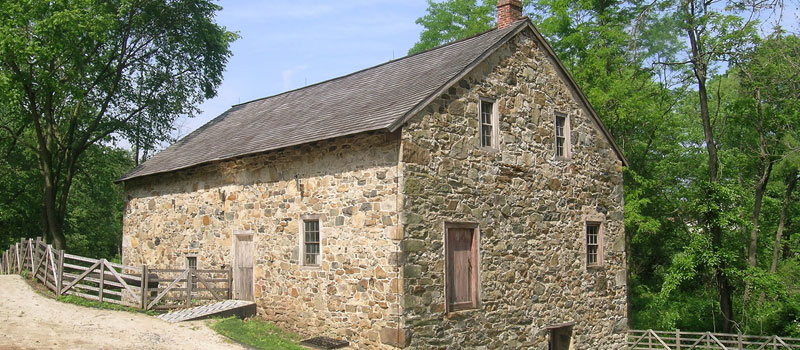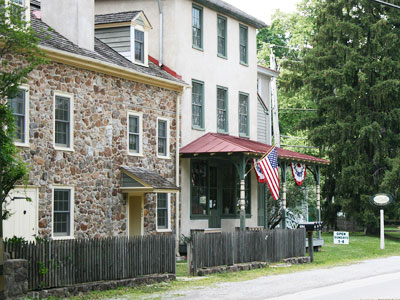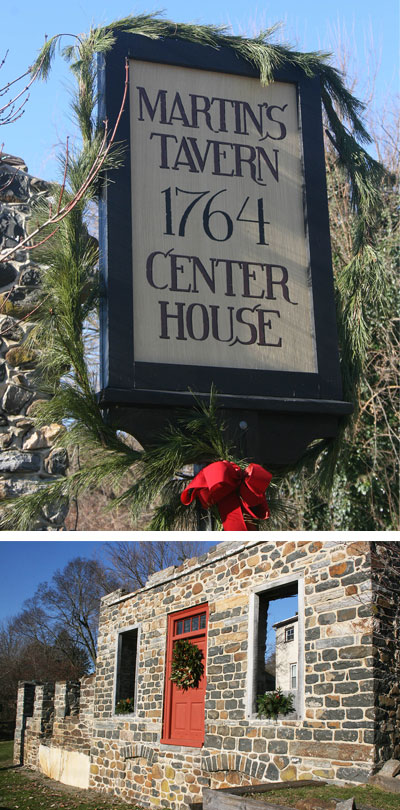Historic Sugartown in Willistown Township is a good example of a village that protects its historic resources through planning strategies and community support. Preservation planning is done in concert with considerations of circulation (vehicular and pedestrian), land use, and new development in and near the village.
How it Works
Municipalities can help ensure the protection of their important historic resources and landscapes by engaging in a municipal historic preservation planning program. Following the spirit of the National Historic Preservation Act of 1966, the Pennsylvania History Code, the Pennsylvania Constitution, and other federal and state policies, the Pennsylvania Municipalities Planning Code requires consideration and planning for historic resource protection. Preservation planning can help a municipality ensure that historic resources and landscape preservation objectives are considered during planning and community development decision making. Specific municipal regulations for protecting historic resources can be viewed in the Historic Resource Protection Standards eTool.
Benefits
People value cultural and historic resources, settings, and landscapes in their communities, because they provide a visual link to a community's evolution, embody a sense of place and identity, retain community character, and display irreplaceable built elements that could not be reproduced today.
Coordinated Municipal Goals
The preservation planning process establishes a community's understanding of its preservation goals and how they fit with other planning goals.
Historic Resource Protection
Historic resource preservation planning applies a systematic approach to develop policies and implementation measures that help protect historic resources.
Smart Growth
Adaptive reuse of historic buildings reduces the need for construction of new buildings, expansion of infrastructure, and the consumption of land and materials.
Energy Conservation
Preservation planning supports the continued use and reuse of existing structures and their materials.
Community Pride
The preservation planning process imparts a greater awareness of historic resources and their contribution to a community's character, sense of identity, and quality of place.
Heritage Interpretation
Preservation planning can enhance the potential for heritage interpretation, which in turn provides educational and tourism benefits.
Economic Value
Property values and economic development can be boosted when historic structures are rehabilitated and used in viable ways, and when historic settings and landscapes are protected and maintained.
Martin's Tavern in West Bradford Township is a historic site stabilized and protected to serve as a community focal point with opportunities for heritage interpretation and passive recreation. Preservation planning by the community ensured this historic resource will remain protected for future generations to appreciate.
Get Started
The Pennsylvania Municipalities Planning Code (MPC) requires consideration and planning for historic resource protection. Standard planning principles of goal identification, data collection, resource analysis, strategy formation, and implementation apply. Community input is a critical part of plan development. Successful preservation planning clearly shows the inherent nature of cultural and historic resources, settings, and landscapes to existing and continued community identity and character.
The goals established by preservation planning should coordinate with other municipal goals (e.g. for community character, economic development, sustainability, and housing) and integrate with a community's comprehensive planning process. In this way, potential policy conflicts can be identified, discussed, and resolved at the outset. Preservation planning often begins late in the process, e.g. after a beloved building is proposed for demolition, leading to perceptions that preservation planning is an impediment or anti-change. This type of reactive planning can be curtailed by having thoughtful discussion and established preservation policy in place.
Considerations
Planning Process
The preservation planning process is similar to other planning processes. However, careful consideration to cultural and historic resource identification, as well as federal and state preservation policy and law is required. Preservation planning is a required element of a Comprehensive Plan; this requirement can be met via an individual plan chapter, combined plan chapter with other complementary subjects, or via a separate plan adopted as part of the Comprehensive Plan. Preservation planning can additionally be addressed outside of comprehensive planning via other types of plans such as village master plans, economic development plans, heritage interpretation plans, or urban, suburban, or rural center plans.
Community Engagement
Fostering community participation is important in developing preservation policy. Engaging the public gives local officials a better understanding of community concerns, creates awareness, and builds consensus.
Perceived Limited Benefits
Without background knowledge, communities may not clearly see the benefits of historic resource protection. This may create potential community opposition to establishing preservation policy and to the implementation of policy already in place.
Property Rights
Regulations that result from preservation planning need to consider property right concerns.
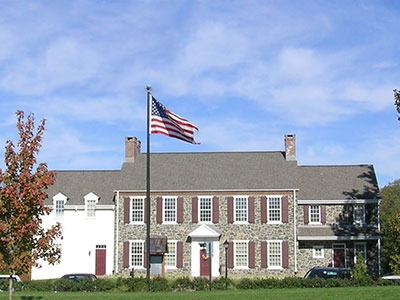
Examples
Kennett Township
The comprehensive plan provides a framework for historic resource preservation planning in a rural and suburban landscape, including goals and recommendations. Preservation planning is also integrated with these sections of the comprehensive plan:
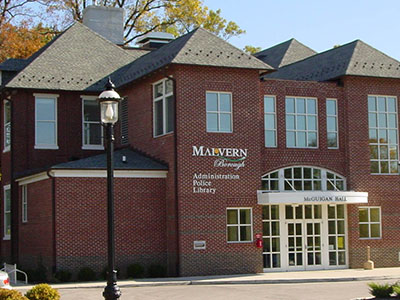
Malvern Borough
The comprehensive plan provides a framework for historic resource preservation planning in an urban landscape, including goals and recommendations. Heritage preservation is also linked with:
Economic development
Recreation, open space
Multi-municipal trail network

West Chester Borough
The borough completed a freestanding Historic Preservation Plan (2011), which was a joint effort by the borough and Business Improvement District to evaluate the state of historic preservation initiatives and recommend changes and initiatives to help insure the protection of the borough’s built environment.

Brandywine Battlefield
The multi-municipal Battlefield Preservation Plan takes a broader perspective in preservation planning by intertwining military land and terrain analysis, with historic resource, natural resource, land conservation, walking, cycling, and boating public access, and heritage interpretation and education analysis.
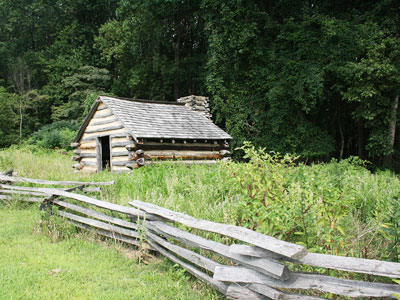
Valley Forge National Historical Park is an example of a cultural landscape protected through preservation planning at the national level. Read more about the Valley Forge NHP Cultural Landscapes.


